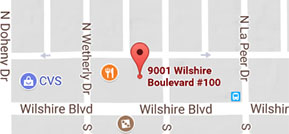ACL Repair
ACL reconstruction is surgery to rebuild the ligament in the center of your knee. The anterior cruciate ligament (ACL) keeps your shin bone (tibia) in place. A tear of this ligament can cause your knee to give way during physical activity.
Description
Most people have general anesthesia right before surgery. This means you will be asleep and pain-free. Other kinds of anesthesia may also be used for this surgery.
The tissue to replace your damaged ACL will come from your own body or from a donor. A donor is a person who has died and chose to give all or part of his or her body to help others.
- Tissue taken from your own body is called an autograft. The two most common places to take tissue from are the knee cap tendon or the hamstring tendon. Your hamstring is the muscle behind your knee.
- Tissue taken from a donor is called an allograft.
The procedure is usually performed with the help of knee arthroscopy. With arthroscopy, a tiny camera is inserted into the knee through a small surgical cut. The camera is connected to a video monitor in the operating room. Your surgeon will use the camera to check the ligaments and other tissues of your knee.
Your surgeon will make other small cuts around your knee and insert other medical instruments. Your surgeon will fix any other damage found, and then will replace your ACL by following these steps:
- The torn ligament will be removed with a shaver or other instruments.
- If your own tissue is being used to make your new ACL, your surgeon will make a larger cut. Then, the autograft will be removed through this cut.
- Your surgeon will make tunnels in your bone to bring the new tissue through. This new tissue will be in the same place as your old ACL.
- Your surgeon will attach the new ligament to the bone with screws or other devices to hold it in place. As it heals, the bone tunnels fill in. This hold the new ligament in place.
At the end of the surgery, your surgeon will close your cuts with sutures (stitches) and cover the area with a dressing. You may be able to view pictures after the procedure of what the doctor saw and what was done during the surgery.
Why the Procedure is Performed
If you don’t have your ACL reconstructed, your knee may continue to be unstable. This increases the chance you may have a meniscus tear. ACL reconstruction may be used for these knee problems:
- Knee that gives way or feels unstable during daily activities
- Knee pain
- Inability to continue playing sports or other activities
- When other ligaments are also injured
Before surgery, talk to your doctor about the time and effort you will need to recover. You will need to follow a rehabilitation program for 4 to 6 months. Your ability to return to full activity will depend on how well you follow the program.




